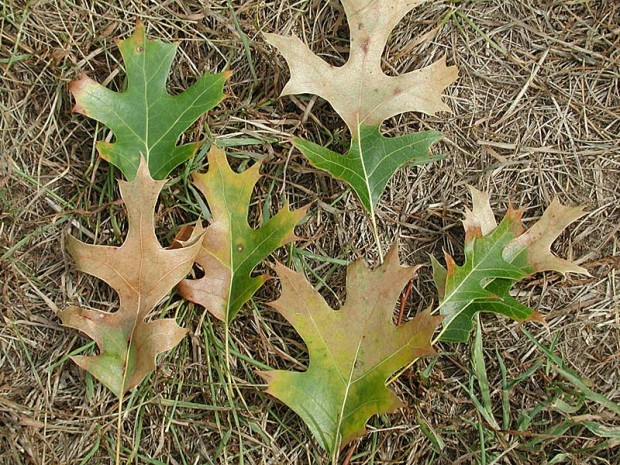
April 15 is the beginning of the yearly window when oak wilt can be transmitted from diseased to healthy red oak trees, the Department of Natural Resources announced.
According to Dr. Robert Heyd, forest pest management program manager for the DNR’s Forest Resources Division, oak wilt is a serious disease of oak trees—mainly red oaks, including northern red oak, black oak and pin oak. Red oaks often die within a few weeks after becoming infected. White oaks are more resistant, therefore the disease progresses more slowly.
“The normal time-tested advice is to prevent oak wilt by not pruning or otherwise “injuring” oaks from April 15 to July 15,” Heyd said. Heyd added that the spread of oak wilt occurs during this time of year as beetles move spores from fungal fruiting structures on the trees killed last year by oak wilt to wounds on healthy oaks. As warmer weather melts away snow and ice, the beetles that move oak wilt become active.
He said although oak wilt hasn’t been detected in every Michigan county, the need for vigilance is present statewide. “With the transport of firewood and other tree-related activities, you have to assume the risk is present, whether you live in metro Detroit or in the Upper Peninsula.”
Spring is a popular time for people to move firewood to vacation properties and other locations. During this April-to-July period, Heyd said it’s vital not to move wood from oak wilt-killed trees. These trees are often cut into firewood and moved, sometimes many miles from their original locations. Any wounding of oaks in this new area can result in new oak wilt infections as beetles move spores from the diseased firewood to fresh wounds on otherwise healthy trees.
The DNR recommends that anyone who suspects they have oak wilt-tainted firewood should cover it with a plastic tarp all the way to the ground, leaving no openings. This keeps the beetles away and generates heat inside the tarp, helping to destroy the fungus. Once the bark loosens on the firewood, the disease can no longer be spread.
New oak wilt sites have been traced to spring and early summer wounding from tree-climbing spikes, rights-of-way pruning, nailing signs on trees and accidental tree-barking. If an oak is wounded during this critical time, the DNR advises residents to cover the wound immediately with either a tree-wound paint or a latex paint to help keep the beetles away.
Once an oak is infected, the fungus moves to neighboring red oaks through root grafts. Oaks within approximately 100 feet of each other—depending on the size of the trees—have connected or grafted root systems. Left untreated, oak wilt will continue to move from tree to tree, progressively killing more red oaks over an increasingly larger area. These untreated pockets also serve as a source of inoculum for the overland spread of the disease.
To get more information on the background, symptoms and prevention of oak wilt, as well as other forest health issues, visit www.michigan.gov/foresthealth and take a look at the DNR’s 2012 Forest Health Highlights Report.

Leave a Reply